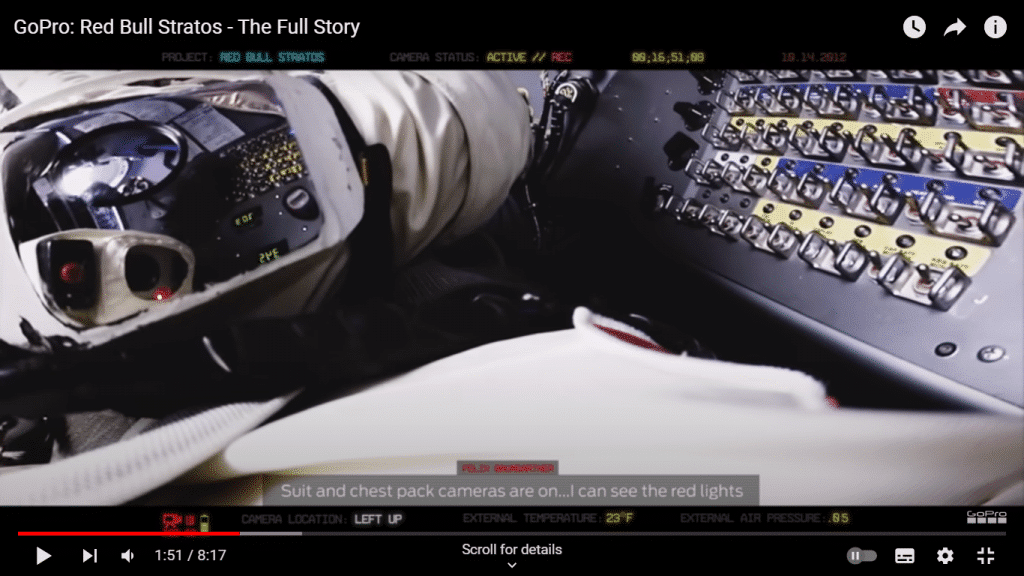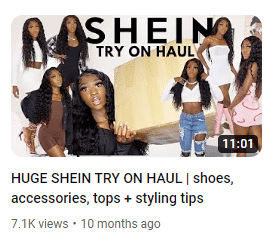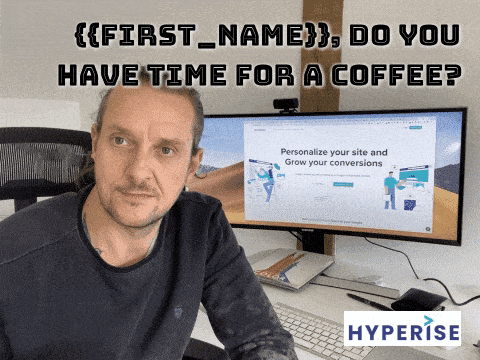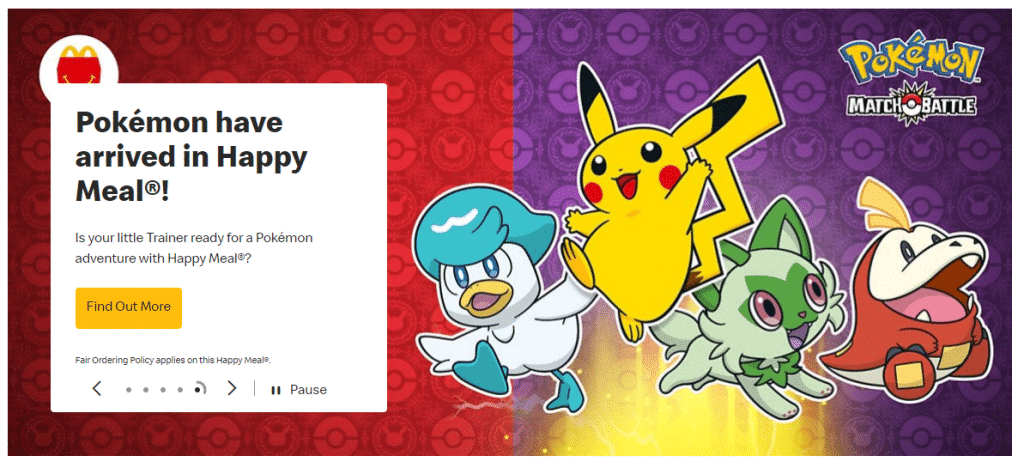
Collaborating with other brands is an effective way to drive brand awareness, conversions, and sales. Joining forces with other companies can help you promote your products and create mutually beneficial partnerships.
But it all starts with a single email.
Successful collaborations often mean emailing brands you want to collaborate with and proposing a mutually beneficial idea.
However, writing that initial collaboration email can be hard, especially if the recipient is unaware of your brand.
This article explains how to write a collaboration email to build partnerships with brands, publications, and influencers in your industry so you can generate the attention your brand deserves.
What Is a Collaboration Email?

A collaboration email is when you contact a company or individual in your industry and propose a mutually beneficial partnership.
Examples of what this partnership could involve include:
- Creating a product or service together.
- Running advertising, publicity, or marketing campaigns together.
- Promoting products.
- Attending or presenting at an event.
- Joining an affiliate program.
The person you contact may receive many similar requests. So, it’s important that your email stands out and clearly communicates why they should work with you. You need to write an email that:
- Is compelling: It makes them want to read it.
- Includes an introduction: So that they know who you are and why you’re a good business to work with.
- Sells your idea: Make them feel excited about partnering with you.
- Tells them what they’ll get out of it: Will it increase traffic to their website? Will it get them lots of free news coverage? Perhaps they’ll sell more of their products. You need to make this clear in your email.
- Is succinct: Busy people won’t read long emails, so you need to communicate all of the above in just a few short sentences.
Later in the article, we’ll explain how to do this step-by-step.
What Makes a Good Brand Collaboration?

Who should you collaborate with? It depends on what you want to achieve and what type of business you run.
Usually, it’s a good idea to reach out to either:
- Businesses that offer complementary products to yours.
- People or businesses with the same audience as you.
A perfect example of the latter is a celebrity endorsement. Desperate Housewives actor Eva Longoria appeared in L’Oreal’s Because You’re Worth It campaign because the brand knew much of its target audience watched the show.
It’s also a good idea to consider how a partnership can extend your reach. A good example of this is YouTube influencers.
They are often much better at marketing on social media platforms than large brands are. Partnering with them can help brands connect with their audience and sell more products.
Partnerships to Avoid
Partnerships to avoid include:
- Those with brands who have direct competitors with you.
- Where there is some sort of brand culture clash.
A good example is the Got Milk campaign, which aimed to get more people to drink milk. The campaign featured rapper Chris Brown and was supposed to be family-friendly.
But the campaign needed to be suspended when Brown was arrested for assaulting his then-girlfriend, singer Rhianna.
3 Examples of Successful Collaborations
Here are some examples of good collaborations to give you an idea of what you could propose in your email:
1. The publicity stunt: GoPro and Red Bull

Compact camera company GoPro teamed up with Red Bull on Stratos, Felix Baumgartner’s record-breaking skydive from space.
Red Bull is well known for sponsoring extreme events and GoPro’s technology is often used to capture footage from the competitor’s perspective. In this case, Baumgartner wore several GoPros during his descent.
Baumgartner set three world records. This means the event made headlines around the world and is still talked about now. As a result, both brands continue to get exposure from the event.
2. The giveaway: McDonald’s and Nintendo
Fast food restaurants are famous for partnering with other brands to offer child-friendly meals. In this example, McDonald’s has partnered with Nintendo to give away some of its new Pokemon playing cards for free with each Happy Meal.
This is a win-win partnership between two brands that are both popular with the same target audience.
As the cards are collectible, children are likely to keep going back to McDonald’s to get more cards (and buy more Happy Meals). And Nintendo gets its product advertised in the world’s most popular fast food chain.
Plus, some children will have continued to collect and swap out the cards once the promotion was over.
3. Get influencers to test products: Shein and Gina B

Social media influencers often establish very close relationships with their audiences.
In this example, influencer Gina B has been sent products from the fashion brand Shein. Shein targets young women who love the latest fashion, which perfectly describes Gina B’s audience.
If Gina says she likes some of the products, her fans will likely buy them. The benefit for her is that she gets free products to review.
In the notes underneath the video, she has links to all featured products. If someone clicks on one of these links, Gina B will get paid a commission by Shein.
This is known as affiliate marketing, and it is a great way for brands to incentivize influencers to showcase their products.
How to Write the Perfect Collaboration Email

Now that you’ve got an idea of what’s possible, it’s time to find some companies to partner with and start writing collaboration emails. Here’s a step-by-step guide on how to do this:
✅ Identify the brands you want to target
You should already know which brands, publications, and influencers operate in your industry. If you don’t, do some research online or ask others in your field for recommendations.
Use the criteria mentioned earlier to decide which businesses or influencers would be suitable to partner with.
Once you have drawn up a list, research each person or organization and find out how they already partner with others. Try to identify the business objectives they’re trying to fulfill.
Also, look for the public relations (PR) contact at the business and make a note of their contact details. This is likely the person you’ll need to send your collaboration email to.
✅ Come up with a collaboration idea
Think of an original idea to help both partners achieve the goals you identified in the first step.
For example, say you’re an influencer, and the company you approach wants to sell more products.
Other content creators may have been producing videos that explain how to use their products. You could take a different approach and offer a comparison video with a competitor’s products.
✅ Write a subject line that grabs their attention
The average person receives 121 emails per day. It’s no surprise that some of them are missed or deleted because the recipient doesn’t think they are important.
How do people decide whether to open, ignore, or delete an email? The subject line.
Your subject line needs to explain why you are contacting the company and compel them to open the email and discover more.
Avoid using subject lines like:
- Partnership request
- Let’s collaborate
These aren’t very compelling and may get your email ignored.
Instead, write something like:
- Proposal: Partner with us and access 40,000 YouTube subscribers
- I’ve generated 3,000 leads for [company x]. I can do the same for you
These subject lines are specific and enticing to the recipient, making your email stand out in their inboxes.
✅ Introduce yourself and your business
Now that you’ve grabbed their attention, it’s time to craft your email.
People have short attention spans, so if your message is too long or difficult to read, they will move on to something else.
Get straight to the point and keep it succinct, but give them enough information that they’ll want to engage with you.
Include:
- Who you are.
- Where you are based.
- What type of content you produce.
- Who your audience is.
- What demographics you serve.
✅ Briefly explain why they should partner with you
You need to tell them how working with you will benefit them. This could include:
- Leveraging your established brand awareness.
- Accessing your broad audience.
- Piggybacking on your strong sales.
- Combining complementary expertise.
✅ Present your collaboration idea
Now, the most important part: your idea. Use this part of your email to explain what you will do, on what platform, and how it will support the business’s sales and marketing strategy.
You should also give them examples if you have done something similar before. This helps support your proposal.
✅ Include proof of past success
It’s important to prove that you have achieved success for other partners in the past.
For example, if you are a YouTube influencer, you might take screenshots from your comments section. These would show people saying that they have bought products based on your advice. You might also have an email from an audience member saying something similar.
Another way to prove this might be affiliate analytics. Most affiliate programs usually come with software that tracks how many people click your links and go on to make a purchase. You can use this data to prove your success to potential partners.
✅ Attach or include a link to your media kit
As you need to keep your collaboration email short, you might only quote one statistic proving your success and then provide a link to your media kit. Here, you can showcase more detailed statistics and reasons brands should partner with you.
The recipient will not only appreciate that you have kept your proposal short but also that you have given them the opportunity to find out more should they want to.
✅ Add a clear call to action (CTA)
You need to include a call to action (CTA) toward the end of your email. This is to tell the recipient exactly what you want them to do. Without this information, they won’t know what to do next.
Try to be specific in your CTA. For example, you might say:
- Can I call you at 14:00 this Thursday to discuss this further?
This makes it easy for the recipient to take action as they can confirm that the time suits them or propose another time.
Don’t say things like:
- I hope to hear from you soon
This is vague and leaves it up to them when they get back to you. If they are very busy, you may never hear from them.
✅Ensure that you follow up
If you don’t hear back, send a polite reminder and reiterate your call to action. Don’t send more than one reminder—if they still don’t get back to you after this, they are probably not interested in your proposal.
A Business Collaboration Email Template to Try

Below, we’ve written an example of a collaboration email that shows what using the steps above might look like in practice.
Collaboration email templates are helpful to follow if you’re unsure how to draft your own.
In this situation, the company wants to sell more software by partnering with marketing consultants who will recommend their tools:
Hi Jennifer,
My name is Richard, I’m a brand manager at Aztecco. We provide CRM software to start-ups in Europe and the USA.
Our blog gets a whopping 1.3 million monthly visitors, and we’d love to partner and share some of your marketing expertise with our readers.
In exchange for the increased profile, we’d like you to offer our CRM software to all of your new consultancy clients.
We did something similar with Marketify last year. They generated 2x leads and saw their website traffic increase by 20%. You can read the articles they published here.
I’ve sent you a meeting request on Zoom for next Wednesday at 10 am so we can discuss this further. If you’re interested, please accept the meeting or propose an alternative time.
Kind Regards,
Richard
Top Tips for a Great Collaboration Email
Here are some tips to help make your collaboration email even more effective:
➡️ Create a partnership landing page
Similar to your media pack, it can be useful to present case studies of each successful partnership you’ve formed and list them on a single landing page.
This allows you to build a portfolio of successful partnerships, and you can use this page to sell yourself in the future.
➡️ Hyper-personalize your email
You can make your email stand out in cluttered inboxes by adding hyper-personalized elements.
You can use software like Hyperise to add the recipient’s name and personal details. Or you can add a call to action to an eye-catching image, GIF, or video.
Here’s an example:

Using images like this in your request means you’re likely to grab the recipient’s attention. In fact, the response rate to messages with images like these is usually double compared to those that don’t have them.
This could give you a better chance at forming partnerships. Even if you aren’t successful, the recipient will be sure to remember you and may contact you for future collaborations.
➡️ Maintain fairness
Remember that a successful collaboration is mutually beneficial. Both parties need to provide and gain equal value. Make sure that what you’re offering is fair for you and your partner.
It’s also important to consider context. A small company has more to gain from a larger, more well-known brand and may have to offer its collaboration partner additional value.
If you are a large company and approach a smaller organization, remember they might have limited resources for the partnership.
➡️ Have questions prepared
If your business collaboration emails are successful, it’s not the end yet. You still need to have the first meeting and sell your idea.
Attend the meeting armed with questions and try to understand what they want to get out of your collaboration. Ask questions like:
- What challenges is your company currently facing?
- What is your brand and marketing strategy?
- How does the platform we use fit into this?
- What are your targets for this year?
- How do you normally work with other companies, influencers, or publications?
- Have you ever done a collaboration like this before?
The Only Collaboration Email Tool You Need
Imagine including a dynamic image in your collaboration email that displays the person’s name, company name, and a customized call to action. This shows the recipient that you’ve done your research and that you value their time.
Personalized images, GIFs, videos, text, and CTAs are all possible when you use the Hyperise toolkit.
Visit our website for a free Hyperise trial and learn how to make your collaboration emails stand out using the power of personalization.
Last Updated on June 4, 2024
